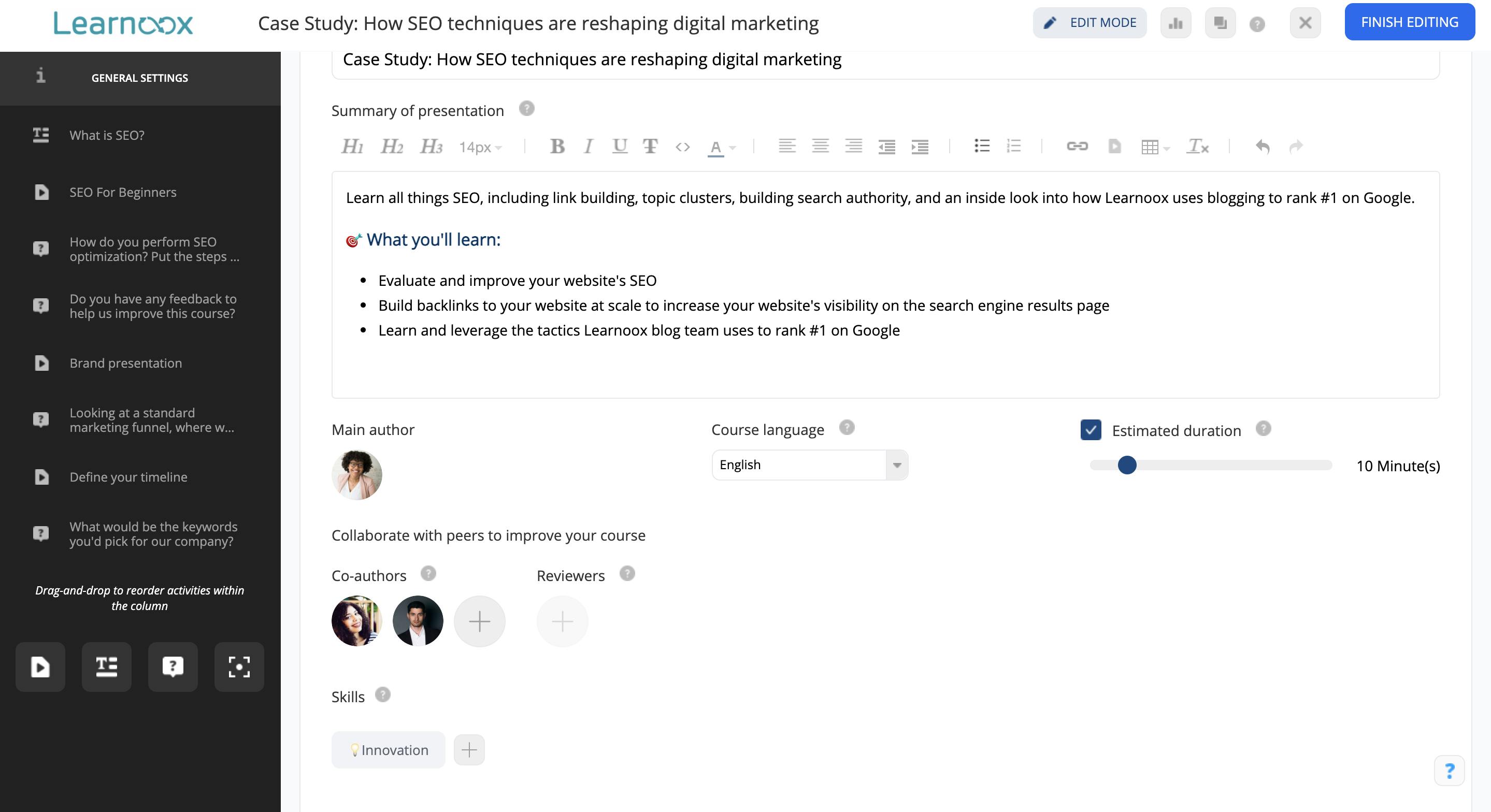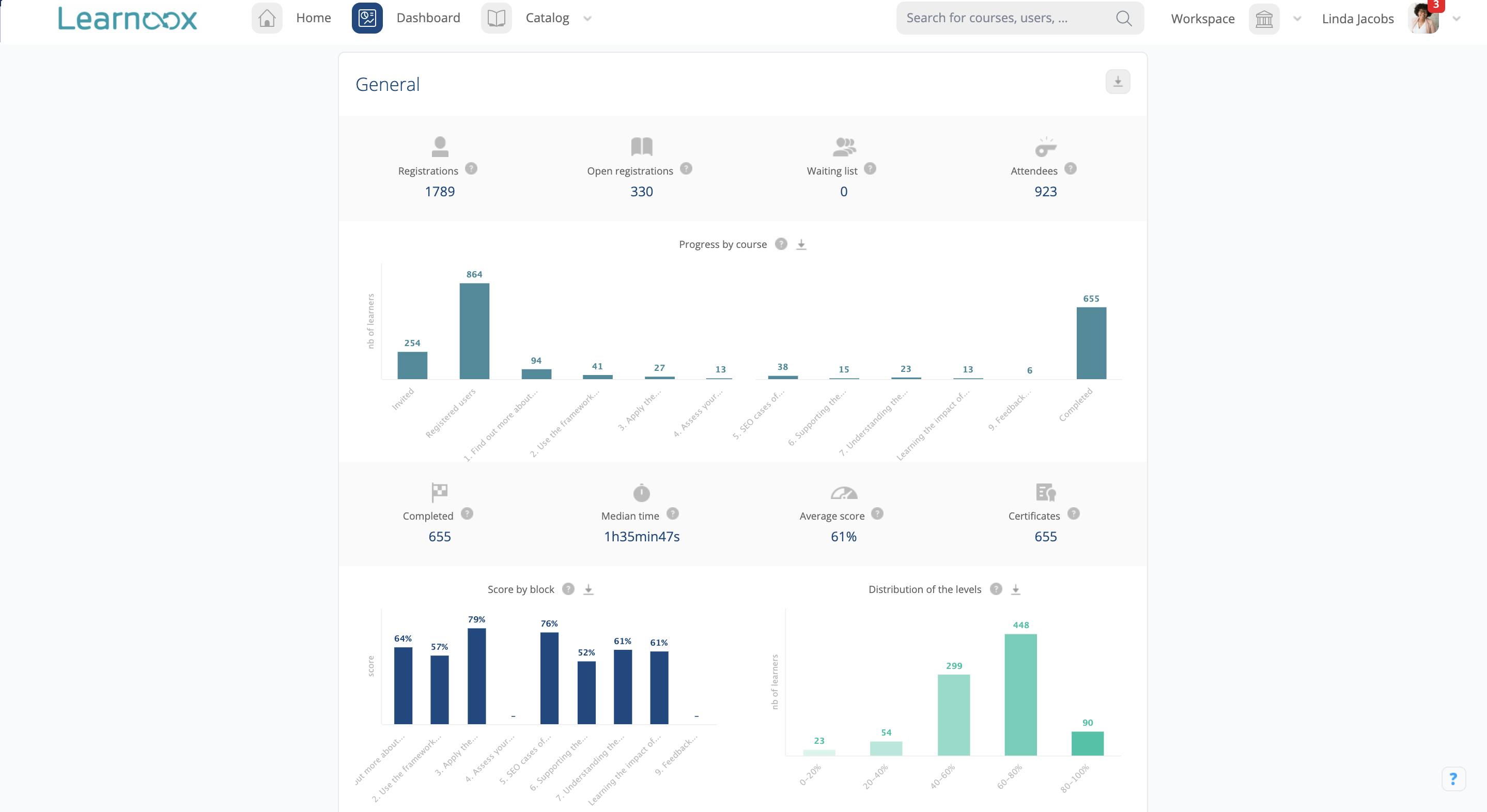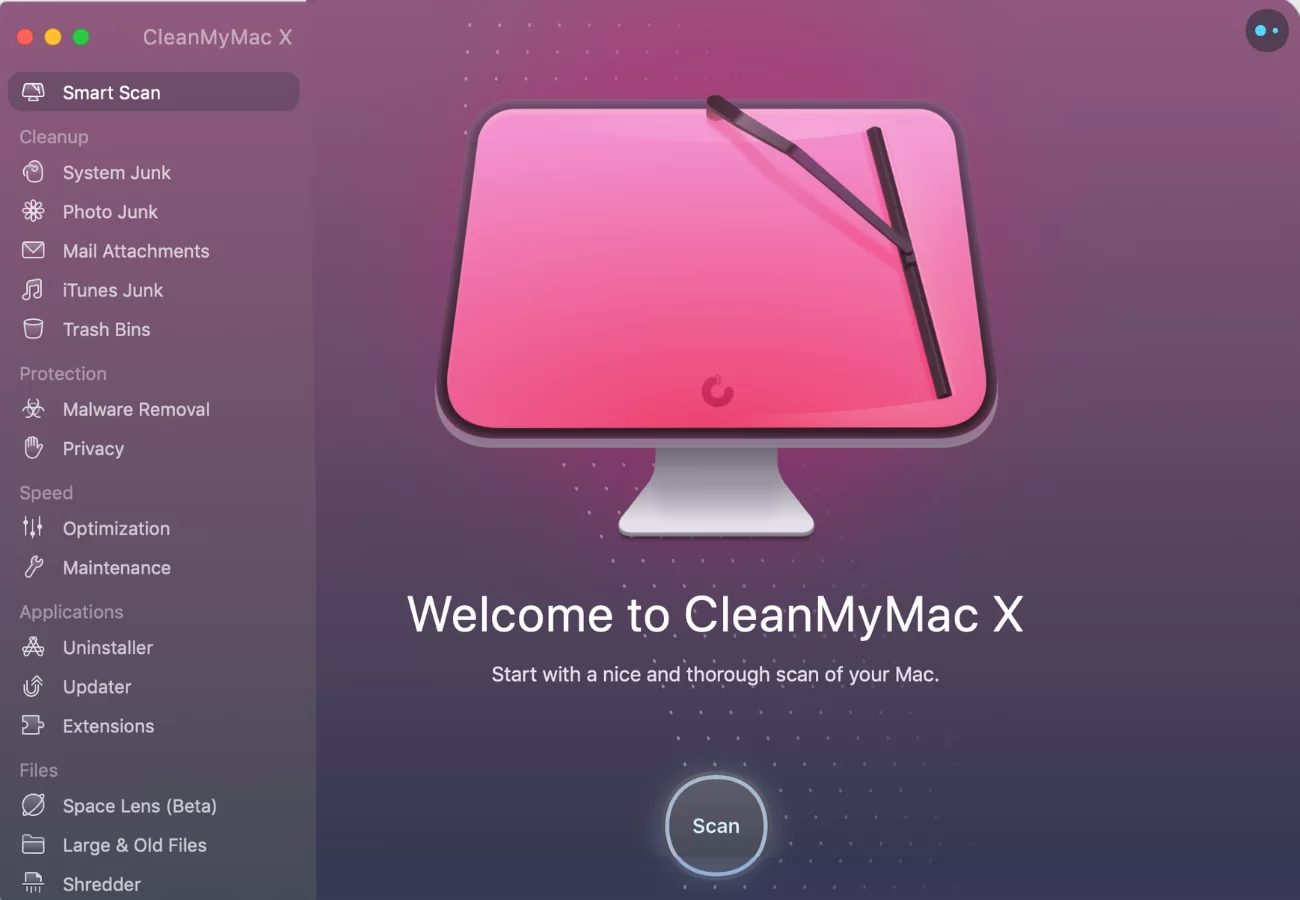If you’re in learning and development, and your team needs training, without the right eLearning Authoring Tool, delivering a digital learning experience can cost you thousands of dollars and dozens of hours. It’s worth mentioning that the average 20-minute course takes nearly 80 hours to create, so providing topical training programs promptly, on your own, and from scratch is next to impossible.
Not to mention, manually creating courses compliant with SCORM or other learning standards requires careful formatting and file packing, which consumes more of your time. Course creation without an authoring tool requires coding knowledge or an in-house developer. If you have neither, you’re essentially stuck. An authoring tool is a necessity for all webmaster experts.
It enables those with little-to-no developer abilities to create digital courses quickly and easily. But there’s an even better option: learning platforms with built-in authoring capabilities, like 360Learning’s application system. Today, expectations for L&D leaders have been higher than ever. Your teams expect you to create training content that is relevant, impactful, and speaks to the current moment.
But how can you deliver courses that match today’s challenges and opportunities when creating content takes weeks if not months? How can you keep your content from becoming dated when the world moves quickly? We want to support you in creating exciting learning experiences that stay relevant longer. As such, we’ve developed this guideline to help you utilize the best authoring tool.
How An eLearning Authoring Tool Helps In Designing A Study Courses Platform
An eLearning Authoring Tool is a program that enables you to create and publish digital courses in select formats. Instead of using code to create a course manually, this tool lets you use drag-and-drop and other user-friendly interfaces to make a course—no coding required. From there, you can upload the content to your preferred learning platform. It can either be ‘stand-alone’ or ‘built-in.’
With a stand-alone authoring tool, you create content in the authoring tool, export it, and then import it to your Learning Management System (LMS) and other applications. It’s worth noting that an authoring tool must output a file in a format that your LMS or learning management system uses; otherwise, you can’t use it. On the other hand, as the name suggests, they are built-in authoring tools.
These tools are integrated directly into your learning platform, so you don’t need to worry about compatibility when exporting and importing. In other words., they help make it fast to create course content and make it convenient to publish or iterate courses using input from subject-matter experts. They exist to make educational content creation feasible for those without design experience.
Authoring tool features vary between manufacturers, with some more bare-bones and others containing advanced features that allow for more in-depth courses. Regardless, every authoring tool strives to make content creation more accessible for you, the user.
The Major Challenges That L&D Teams Face When Creating Course Content
AI has quickly become the hottest topic of 2023. And everyone is eager to try it out and see what it can do for them. Even The Beatles are using it, with Paul McCartney announcing one final song featuring the voice of the late John Lennon. Amidst the hype and lingering concerns surrounding AI, it’s undeniable that AI is poised to reshape the business landscape, whether we’re fully prepared or not.
As forward-thinking L&D leaders, we can leverage this transformative technology, elevating the value of our contributions and expanding our impact. With AI as our ally, we can enhance productivity, tap into our creative potential, and make better-informed decisions. This is our chance to be at the forefront of innovation and carve a path towards success in an ever-evolving world.
Of course, the role of an effective product authoring tool is invaluable in an educator-based website business. One thing is sure: The developers work with many L&D teams and regularly talk with L&D leaders about their difficulties. They tell us that the most significant training challenges L&D teams face when creating content are bottlenecks in creating content and low course engagement rates.
1. Bottlenecks In Creating Content
Regarding peer training, creating a single hour of eLearning takes 130 hours and $22,178. And most L&D teams work independently, meaning they’re solely responsible for creating this content. If you’re lucky, you might have a small instructional designer team to help you. It doesn’t have to be so hard. Every organization has the subject matter expertise and knowledge to create engaging, impactful courses that move with the times. You must bring it all to life for your learners without spending months developing each course.
2. Low Course Engagement Rates
Regarding peer learning, science tells us humans learn best from peer-based interactions. Instead of being a one-way street, modern training needs to be collaborative, decentralized, and, above all else, current. Unfortunately, much of the content offered through L&D platforms is outdated and isn’t built with collaboration in mind. That’s a big reason why the average course completion rate in 2020 was only 20-30%. How can you overcome these low engagement rates and keep your learners motivated? Empower your subject-matter experts to create fun, interactive content in minutes rather than days or weeks.
How An eLearning Authoring Tool Empowers A Study Management System
As a rule of thumb, you’re falling behind if you’re not building a collaborative learning culture. The learning needs of your organization will change over time. However, you can’t innovate without a skillful workforce. An eLearning authoring tool helps you tackle every new learning need—from new skills onboarding and sales enablement to customer and partner training (and many more).
Reskilling programs and skill matrices used to be the answer, but they’re too complex and slow for today’s demands. To stay ahead, you need the flexibility and speed to close skill gaps as they arise, and only collaborative learning allows you to do that. Baby boomers are fast retiring from the marketplace. Everyone else is resigning. And when they do, they’re taking their skills with them.
Resource Reference: AI In Learning And Development Use Cases That Will Set You Apart
The only way to maintain an edge over the competition and win the talent war is to capture expert knowledge or retain top performers. Usually, collaborative learning helps you do both. Today’s learners don’t want mandates—they want ownership. Empower them to have autonomy over their career growth and help your organization upskill from within, all with collaborative learning.
A built-in authoring tool takes the convenience of an authoring tool and makes it native to your platform of choice. However, this only scratches the surface of a built-in authoring tool’s benefits. First, look at standard (stand-alone) authoring tools and what they bring. While authoring tools make content creation possible for virtually anyone, this is only the beginning of their benefits.
1. Anyone Can Create Courses With Authoring Tools
As we’ve mentioned, without an authoring tool, you need a developer or coding skills to create professional-grade courses. This is a time and money sink in itself. But, more importantly, this means many ideas are left unexplored. If you or someone on your team has a topic for a course or training module, an authoring tool gives them the freedom to act on that idea independently.
It’s also worth noting the speed of an authoring tool makes it possible to update existing material faster. You can take a genuinely agile approach and refresh on the fly if you have an outdated course or a course that received critical employee feedback. This can even result in improved engagement rates, as you’ll have classes that better reflect employees’ needs.
2. An eLearning Authoring Tool Lets You Scale Faster
As your company grows, your learning and development needs will also balloon. Authoring tools allow you to keep up with a growing demand for more education and training within your company. Keeping up with demand requires the ability to create content quickly. Outsourcing to a developer isn’t just costly and will slow you down.
Anytime your course needs a refresh, you’re at the mercy of your developer’s availability. And if you’re a dev yourself, you still have to manually update and test the courses to ensure they work after changes are made. Using an authoring tool that outputs in your platform’s format will work. This means you don’t have to waste time bug testing or waiting on development.
3. Course Iteration Is Made Easier By Authoring Tools
Ever find yourself guessing about what training your employees need? You don’t have to with a robust eLearning authoring tool in place. With real-time declaration and upvoting of learning needs, learners can tell you exactly what training they need to succeed—all from within the learning management system. Plus, you can easily find people in your company with in-demand expertise.
Manually developing a course can result in proprietary code that doesn’t work without being heavily tweaked. This makes it difficult to use old courses as templates for new material, as the code will again have to be changed. With an authoring tool, you can copy a previous piece of content, modify whatever you need to change, and publish a new piece far more quickly than doing it manually.
The Topmost Common eLearning Authoring Tools: Standalone Vs. Built-In
Using an authoring tool is as easy as copying and pasting between Google Docs. That way, you can spend less time worrying about the format and focusing more on creating effective learning materials. When using a stand-alone authoring tool, ensure the file output matches your learning platform. If the file output isn’t the right fit with your learning platform, you won’t be able to use the file.
This means you need the right learning platform and the right authoring tool. If you’re using a learning platform with built-in authoring capabilities, the content output will work on the platform because it’s native. This takes compatibility worries off your plate and allows you to focus on creating effective learning materials. Watch the tutorial video guide for a few eLearning authoring tools you can use.
Creating content should be a smooth, streamlined, and collaborative process. And when existing content becomes outdated, updating it shouldn’t be a chore. A suitable tool allows L&D teams to empower subject-matter experts to author courses. Then, once these learning courses are developed, L&D leaders can either validate them as meeting standards or point out areas of improvement.
In layman’s language, it’s clear that a stand-alone authoring tool has its merits, but there’s a unique benefit in using an authoring tool built into a more extensive learning platform. Specifically, you don’t have to worry about compatibility issues using the same tool to create and distribute courses. You can create new courses (and borrow content from existing ones) without ever leaving the platform.
Why You May Need An eLearning Authoring Tool:
- First, if you don’t have an in-house developer or instructional designer: If you have an instructional designer or someone who can develop a course, you likely aren’t in urgent need of an authoring tool to create content.
- Secondly, if you can’t afford to hire a developer: If you can’t, an authoring tool is more cost-effective and will allow you to create the content you need.
- Next, if you struggle to deliver training on time: If you’re under pressure, an authoring tool can help you speed up the creation process. This is especially important for topics with a shelf-life that must go live ASAP.
- Finally, you may need one if your team is increasing: If your team is scaling fast, you will have increased training needs. It’s easier to keep up with demand with an authoring tool than manually creating content.
Again, the above criteria are only considerations. Ultimately, deciding to use or without an authoring tool depends on how much time and resources you spend manually creating learning courses.
How To Create Impactful Study Courses With 360Learning Authoring Tool
While everything about work has changed, corporate learning hasn’t. It’s still top-down, siloed, slow. Skill gaps are growing wider, knowledge is disappearing when employees leave or retire, and companies are forced to invest millions and billions of dollars into reskilling programs. We believe this must change—for the good of companies and the good of learners. And here is the solution.
The 360Learning Authoring Tool offers a learning platform with a built-in authoring tool that allows you to copy and paste elements from other content you create, meaning you can find new life from old pieces. This also speeds up the content creation, as you don’t have to do the same work again. You can also customize pre-made templates, giving you a head start on your content creation.
For your information, it’s worth mentioning that 360Learning is recognized in the Gartner Market Guide for Corporate Learning Technologies for the 3rd year in a row. Over the last decade, the 360Learning company has built a fantastic platform that enables any expert in your company to teach classes online. To secure your success, 360Learning is committed to privacy and data protection.
In this case, certified with ISO 27001, the authoring platform meets global data security and management standards. At the same time, they are committed to complying with the requirements of regulations protecting personal data, with GDPR and the European authorities’ guidelines as their first frame of reference implemented by their DPO. This means that your information is always safe.
Notable Features:
- Compliance Training: Automate and manage mandatory training and retraining.
- Employee Onboarding: Eliminate onboarding busywork and instill a sense of community.
- Seamless Conversions: 360Learning courses have an average 91% completion rate (an average of 11 learner activities daily).
- Sales Enablement: Train your sales team to win with 1:1 video coaching at scale.
- Frontline Training: Equip frontline teams with relevant training available on any device.
This tool provides value—there’s no denying it. Using a platform with a built-in authoring tool opens the door to seamlessly co-authoring courses as a team. Discover the LMS tool powered by collaborative learning. On that note, the 360Learning Authoring Tool lets your team flag learning needs, hop in and create courses for those requiring assistance, and coordinate efforts as a team.
Equally important, as you can see from the image below, is that because the authoring tool is integrated with the learning platform, you can quickly access stats on-course performance. With this information, you can change your courses to reflect any glaring issues that arise after the course is live. At the same time, this information allows you to track how courses are performing over time.
Be that as it may, why work alone when you can work together? In that case, you can sign up for a free demo today and see how 360Learning can help you make learning a team sport. With that in mind, below are the simple steps of creating learning content with the help of the 360Learning Authoring Tool that immediately impacts every one of your learners (download a free eBook here).
Step #1: Invite Subject-Matter Experts
On the one hand, your greatest asset as an L&D leader is the expertise within your teams. On the other hand, your subject-matter experts have much to offer when creating current and engaging content. You need to know how to leverage this expertise and put it to work. The first step in creating great content with the authoring tool is to invite subject-matter experts to co-author your content.
Have them weigh in on the issues, and don’t be afraid to pick their brains for the insights your teams need. With these experts as co-authors, your content will have more credibility, and the insights they offer will make learning more engaging and stimulating.
Step #2: Create Study Course Content
The 360Learning Authoring Tool makes it quick and easy to create great content. You can copy and paste information from any format and bring the material to life using a range of formats from our 100+ trusted partners, including YouTube, Vimeo, Google Drive, SlideShare, and more. This creation process is decentralized, meaning subject-matter experts can contribute content.
Likewise, they can also help build courses directly without asking L&D leaders for permission. Even better, the Authoring Tool works with your team’s tools instead of simply SCORM-based — though the platform works with SCORM formats to maximize efficiency.
Step #3: Exchange Internal Comments
Every great course is the result of internal deliberation. To turn a first draft into a completed version ready to ship to learners, you need to exchange ideas, point out areas for improvement, and watch things take shape with input from subject-matter experts. The 360Learning Authoring Tool makes it easy to share these insights. You can exchange private notes as you co-create courses.
You can also suggest topics for discussion and areas for improvement. This way, every training process step is collaborative — even creating the content itself. There’s a reason why users deploy their first course within just an hour on this platform. It’s fast and intuitive and frees you up to spend more time with learners.
Step #4: Include Interactive Assessments
A command and control approach to work and learning is demoralizing. With the help of the 360Learning Authoring Tool, you can shape your assessments to suit learner needs, using different question formats to ensure they understand and retain information. Choose from the limitless question formats.
Some formats include open-ended, multiple-choice, and opinion questions to keep learners engaged. You can also bring the material to life by asking learners to rank items in order or identify the correct ‘hot spot’ in an image.
Step #5: Publish Your Courses And Iterate
Once your course is ready, you can ship to learners and use their reactions to improve your content and delivery. Notwithstanding, the 360Learning Authoring Tool offers a reaction feature that makes it quick and easy for learners to let you know what they think.
As a result, this gives you the resources you need to iterate and improve over time. This feedback loop is a big reason most of its users achieve course satisfaction rates of up to 99% in their learning systems. It makes it easy to build content to match your learners’ needs and notify you whenever existing content needs updating to reflect changes or market developments.
Step #6: Reward Your Creative Co-Authors
When learners engage with your course, the 360Learning Authoring Tool sends notifications to your subject-matter expert co-authors to reward them for their contribution. This tells them they’re valued and helps to reinforce the habit of contributing to shared learning.
Of course, before you know it, your learners will create course content independently and invite you to contribute as a co-author. Eventually, that’s what Collaborative Learning looks like in practice.
Summary Notes:
Of course, it’s worth mentioning that the old way no longer reflects us—how we work and live. It no longer meets the demand for new skills—it no longer works. Like the professional Web Tech Experts and the Webtechex team, the same goes for 360Learning; they believe in a new way. We all believe in collaborative learning, where learners are teachers and teachers are learners.
This is a unique and special workplace where L&D and in-house experts are empowered to work together to share and capture knowledge. In other words, this is where your secret geniuses become recognized mentors, capable of driving growth for your employees, customers, and partners. You don’t have to outsource to upskill — we believe you should be able to upskill from within.
Resource Reference: 6 Ideas for How L&D Teams Can Use Genially for Interactive Learning
As mentioned, 360Learning Authoring Tool is a platform that can help you build a culture of collaborative learning and win the battle for skills. Among its essential features is that it uses AI and collaborative features to turn your in-house experts into L&D collaborators. This allows you/your study business managers to upskill quickly and continuously—all from within your organization.
360Learning makes building a collaborative learning culture easy so you can upskill from within and win the battle for skills. As such, it helps you remove the headache of picking, integrating, and running multiple learning solutions. They utilize only ISO 27001-certified global hosting providers, ensuring your data is managed with integrity and in compliance with strict security standards.






